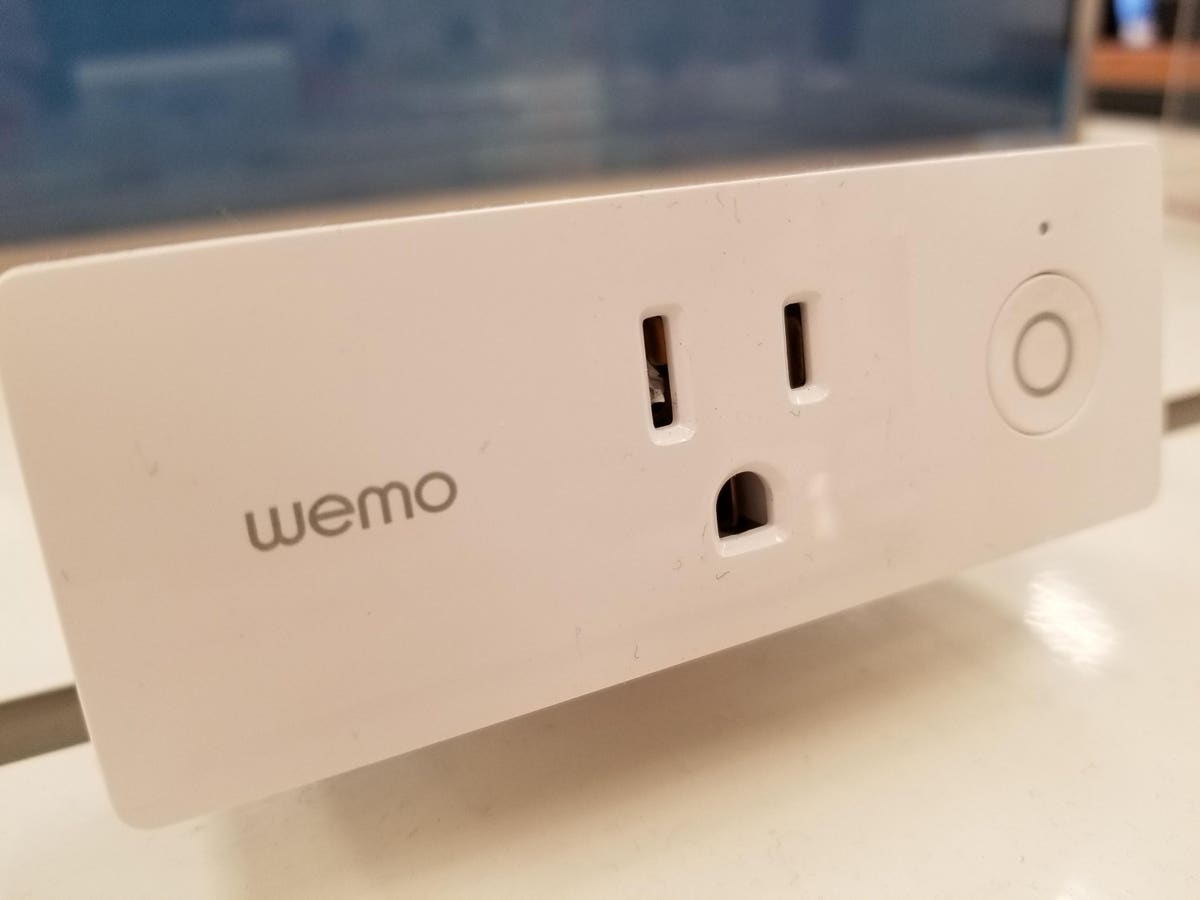Back in 2020, I wrote here on Forbes about Belkin’s decision to brick its NetCam product and abandon the customers who bought into it.
I asked at the time whether the brand could ever be trusted again?
Five years on, they’ve has answered that question themselves.
A Belkin Wemo Insight Switch smart plug, taken on August 16, 2017. (Photo by Olly Curtis/T3 … More
Belkin dropped the bomb to customers last week confirming it will end its support for their Wemo smart home device range on 31st January 2026. No workaround, no software updates, and no plan to hand over control to users. Just a shutdown notice and lots more raw material for landfill.
The devices don’t have a serious flaw; they haven’t failed, but they are about to cease to function for their intended purpose because Belkin simply no longer wants to support the infrastructure they depend on. It’s a business decision that will affect millions of users*
And that’s the flaw at the heart of the Internet of Things (IoT) dream that brands bought into in the early 2010s – the moment a company decides your connected product is no longer worth their time or money, it simply becomes e-waste.
But when manufacturers like Belkin turned ‘dumb’ products into smart solutions, they took on a responsibility – maintaining a connected infrastructure. Now, instead of owning the problem, they’re walking away from it. And in their case, they’ve done this for a second time.
IoT was never supposed to be like this.
Back in those heady smart-home days of 2013/14, and in many previous waves before that, we were promised a smarter world: intelligent homes, effortless automation and seamless integration. But it’s now clear that many companies treated the opportunities presented by IoT like any other consumer electronics trend – a sales opportunity to exploit rather than true innovation and a long-term commitment to uphold.
Unlike previous waves of devices that promised smarthome utopia, this time the dropping of support permanently renders the devices useless.
My TRS-80 from 1977 had a “Plug’n Power” add-on. It provides the same functionality as the Wemo, but 48 years later functions exactly as well as it did the day it was new.
I also have a 1996-era “Home Director” system from IBM. Running Windows 95, it’s not a practical solution to control my home30 years later, but it still works exactly as intended.
The difference? The 21st Century era devices are all “Cloud Tethered” – taking us all a step closer to Technofeudalism and the antithesis of utopian automation that is the dream of enthusiasts of this field.
Belkin is aware that severing the Cloud Tethering is “change [that] may disrupt your routines”. As someone who owns 41 Wemo smart plugs, I’m painfully preparing for this disruption. I’ve invested a huge amount of time and money installing and configuring their system. They work in perfect harmony and have done so flawlessly for over a decade. But now I must spend an entire weekend or more of transferring to their Zigbee/ Zwave equivalents. My ‘digital housework’ workload is about to become a major challenge. It’s the digital equivalent of the roof falling in. Except I’ve got 6-months to prepare, but no-one except me who can fix it (and no insurance to come to my rescue)!
Close-up photograph of a white, “Wemo” brand plug, used to control home electronics remotely, San … More
There is some ‘good’ news. Belkin has learnt lessons from the NetCam debacle by providing more time to switch. But I believe there’s a better way of doing things:
- A better timeframe – This time round, Belkin is giving us Wemo users six months to prepare for the shutoff. That’s more than we had for NetCam, but the brand’s claim that the decision “has not been made lightly” doesn’t ring true. This timeframe is simply not long enough. Instead, the transition period should be over several years. Think of Windows 10 – it’s finally being retired in October 2025, but we’ve had plenty of warning, and even then:
- Extended service – Belkin’s decision to switch off the Wemo App is a business decision. Again they could take lessons from Microsoft and offer an extended service package. Even if this requires a fee from customers, it will at least ensure we have future support. And remember, Windows 10 PCs aren’t getting bricked. They will carry on running browsers, games, and many other applications long after Microsoft removes support. The Wemo devices are going straight to landfill.
- Get real about refunds – Belkin is also offering partial refunds to some customers who have products “within the applicable warranty period”. But what about the early adopters who have invested heavily in this system? Sure those who spent the most and who’ve stayed the longest ought to receive more compensation than the Johnny-come-lately’s to the smarthome party?
Belkin clearly knows this announcement won’t land well either — the email includes three separate apologies. But instead of hiding behind vague corporate language, they’d have done better to be honest. Imagine if they had written:
“Back in 2011, we saw a market opportunity and launched Wemo. In hindsight, we underestimated the complexity of supporting a smart home ecosystem. We now realise we can’t sustain the Wemo platform long-term. That’s why we’re giving you three years to transition to a new system. We’re truly sorry to let you down – reliability and trust are core to our brand, and we know we’ve fallen short.”
And imagine if they went further:
“And as part of our end-of-life programme for these smart devices, we’re releasing one final firmware update which will open the protocols used to connect to the Wemo device and allow you to control it via third-party applications. We’ll be updating the Wemo app also to make it easier for your transition to another system, and hope that these devices continue to function for years, or even decades to come. With a vibrant open-source smarthome community such as those provided by Domoticz and other groups – we’re confident that your investment in these product and our brand will not have been wasted.”
Or further still?
“Oh, and we’re releasing the Wemo source code on GitHub so the opensource community can build and improve on the foundations we’ve laid. And we’re providing full schematics and technical documentation to iFixit so that the repair community can keep our excellently designed and crafted Wemo devices in service for the long term. After all, our organization is made up of people who want to leave the planet a better place for our children and future generations. We remain forever and authentically passionate about renewing our commitment to a circular economy and carbon neutrality and continuing our pledge to support the Paris Agreement.”
Well, the last sentence is actually a genuine quote from their CEO, Steve Malony a few years back. His commitments are perhaps not as authentic or long-lasting as they might have been intended.
Belkin’s decision to brick more of its devices is just the latest example of a broader industry blind spot. It’s a failure to respect the long-term obligations of smart infrastructure. It also flies in the face of the environmental promises many tech companies like to make. I’m now soon to be left with a pile of perfectly usable devices destined for landfill, purely because of lazy software engineering, and poor business planning.
The decision to retire these Wemo products will certainly create a huge amount of e-waste, but I dread to think the impact that a decision by Amazon or Philips will have when they bring to an end their own smart home products like Alexa and Hue lightbulbs.
One simple business decision has major environmental impact and leave millions of customers with the task of ‘upgrading’ to a new system. In the case of Amazon – they have somewhere towards 100-200x more smartdevices in the market than Belkin did with the Wemo. Let’s hope they act more responsibly when the time comes.
If we want a sustainable, trustworthy, and truly “smart” future for our homes, this isn’t it. I just hope we get there before the IoT dream is shattered for all time. Trust in Belkin might be shot, but there is still opportunity for others to get this right.
* Google Play store confirms the Wemo happ has been downloaded 1M+ times. Based on the 56.9k reviews (mostly negative), and a 1:50 download to review ratio: this leave us with an estimated number of 2.8M users globally. Assuming Google Play devices have a market share of 70%, we can therefore extrapolate there to be approximately 4M Wemo users globally.
** I of course approached Belkin for comment on this story before publishing, but at time of writing there are still *crickets* from their press team. If they squeak, I’ll be sure to update.









